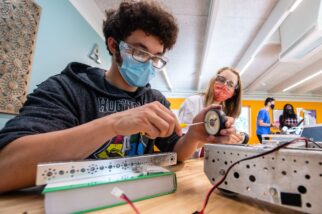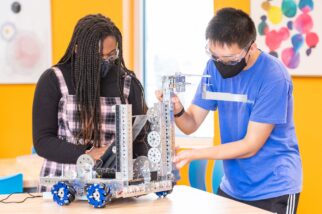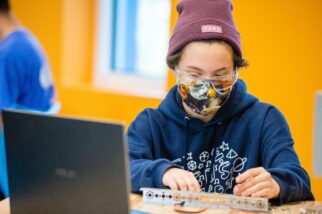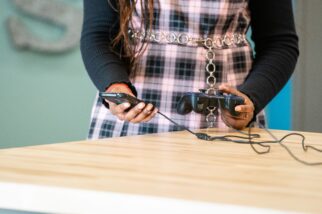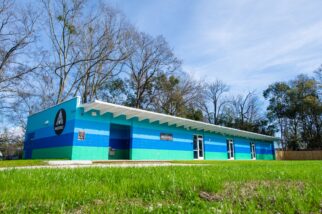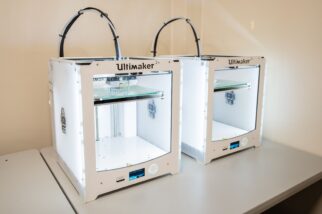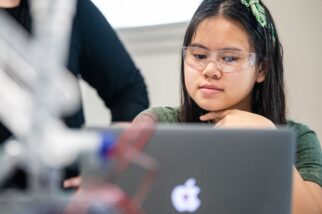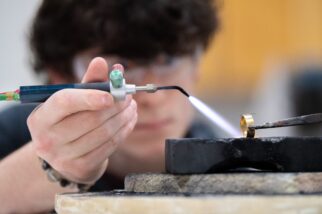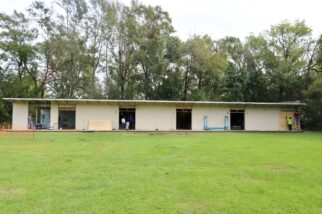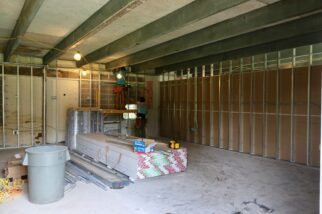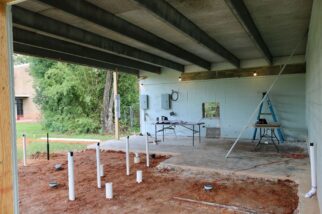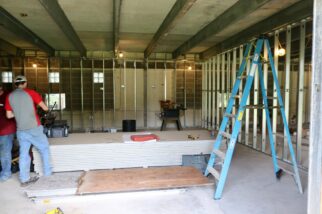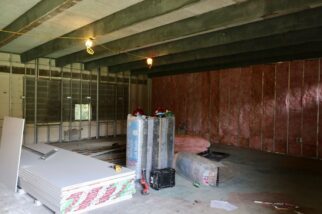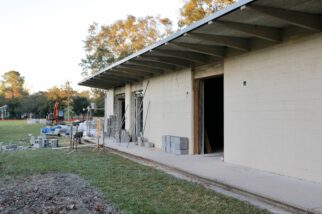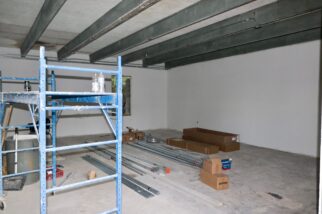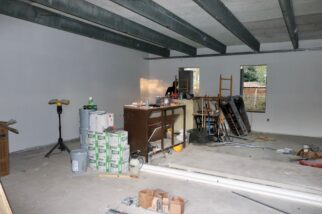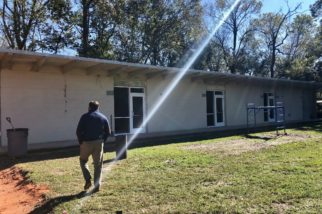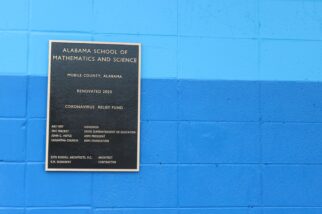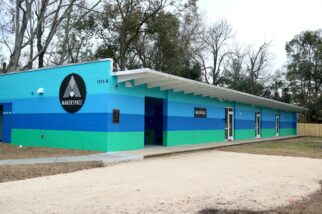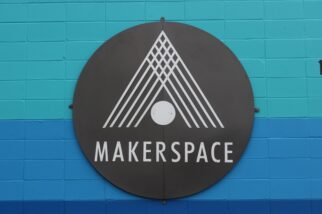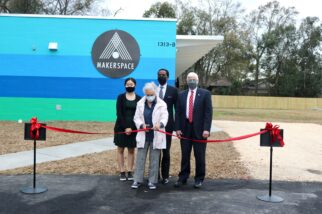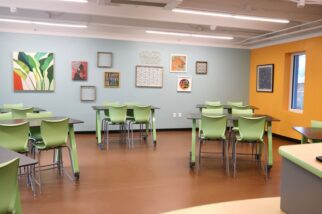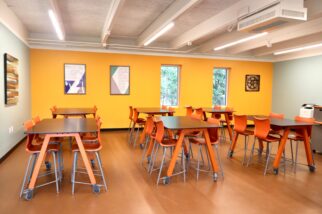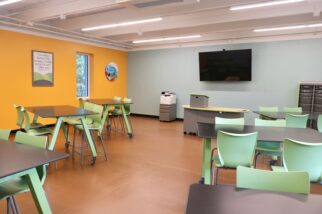Welcome to the Makerspace!
We are pleased to announce the opening of the ASMS Remote Learning Center and Makerspace on West Campus!
What is a Remote Learning Center? In this era of a global pandemic, a remote learning center is a space designed to follow the guidelines for social distancing but also allow for some in-person instruction. In addition, the center will provide faculty with an area specifically designed for filming instructional videos for periods during remote learning. The Remote Learning Center will consist of 2 large classrooms that can accommodate classes of up to 25 socially distanced students. A third area will be a dedicated “studio” for faculty to record instruction. This room will be outfitted with the technology necessary for filming and streaming instruction.
What is a Makerspace? A Makerspace is a collaborative workspace for creating, learning, exploring, and sharing. Such a learning environment can provide students with critical 21st century skills in the fields of science, technology, engineering and math (STEM). ASMS has identified that students need empathy, problem-solving, flexible thinking, and collaborative skills in order to thrive in a creative economy. These are the types of skills students can develop in a well-designed school Makerspace.
The facility began as a school storage building, and the renovation project was funded through a $350,000 appropriation from the state CARES Act as well as funding from the Daniel Foundation, J.L. Bedsole Foundation, Ben May Charitable Trust, and individual donors to ASMS. Today it is one of the only innovation spaces on a school campus in the state of Alabama. We want to extend our gratitude and appreciation to these stakeholders for making this project possible and offering this innovative, educational space to our students.
Why is it useful to have a Makerspace at ASMS? Here are five benefits of a Makerspace for ASMS students:
1. A Makerspace will help develop a maker mindset in students. When students develop a maker mindset, they learn to think divergently and solve problems by connecting seemingly disconnected ideas. Students also learn how to work through the entire design process, ask wild questions, engage in hands-on research, and ultimately generate innovative ideas.
2. Makerspaces encourage interdisciplinary learning. Students might do coding, circuitry, and engineering. They might also film documentaries or record podcasts for a documentary that blends together elements of science and social studies. In the process, students learn how to make valuable connections between the subjects and content areas that we have traditionally placed into silos.
3. Makerspaces are a perfect place to develop a growth mindset. A Makerspace is a safe place to fail. Here, students internalize the idea that every creative work is an experiment full of iterations.
4. Makerspaces improve student agency. In a Makerspace, students decide what they are creating and how they are going to create it. Students choose the supplies, the approach, the scaffolds, and the topics. As they move through the creative process, they learn how to monitor and adjust on their own.
Follow the Construction Progress
Early October 2020
End of October 2020
Mid-November 2020
End of November 2020
December 2020
Mid-December 2020
January 2021
Grand Opening!
